
Start Preparing: Expert-Curated How Big How Heavy Worksheet for Class 5 Maths (2025-26)
We often think that something bigger than another object is also heavier. But the concept of big and heavy teaches us that it is not mandatory that a bigger thing is necessarily heavier. Big and heavy are two important aspects of any object. Big is associated with the volume of an object, whereas heavy deals with the weight of the object. These two concepts are very essential for kids as many topics in Maths are based on how big or how heavy an object is.
The Maths Worksheet Class 5 of Chapter 14, How Big How Heavy, teaches various concepts related to the weight and volume of an object. Children will learn how the volume of an object is measured and how weight is associated with the force acting on an object. There are also many Class 5 Maths exercises where they have to use different units of measurements of length, weight, and volume. Through practical exercises like glass and marbles, kids improve upon the concept by actually seeing how the volume of water rises by the number of marbles put into the glass.
Importance of Going Through Maths How Big How Heavy Question Answer
Cubes of centimetres were used to create the shapes below. Calculate the volume for each one. ( for Questions 1 to 5)
1.

2.
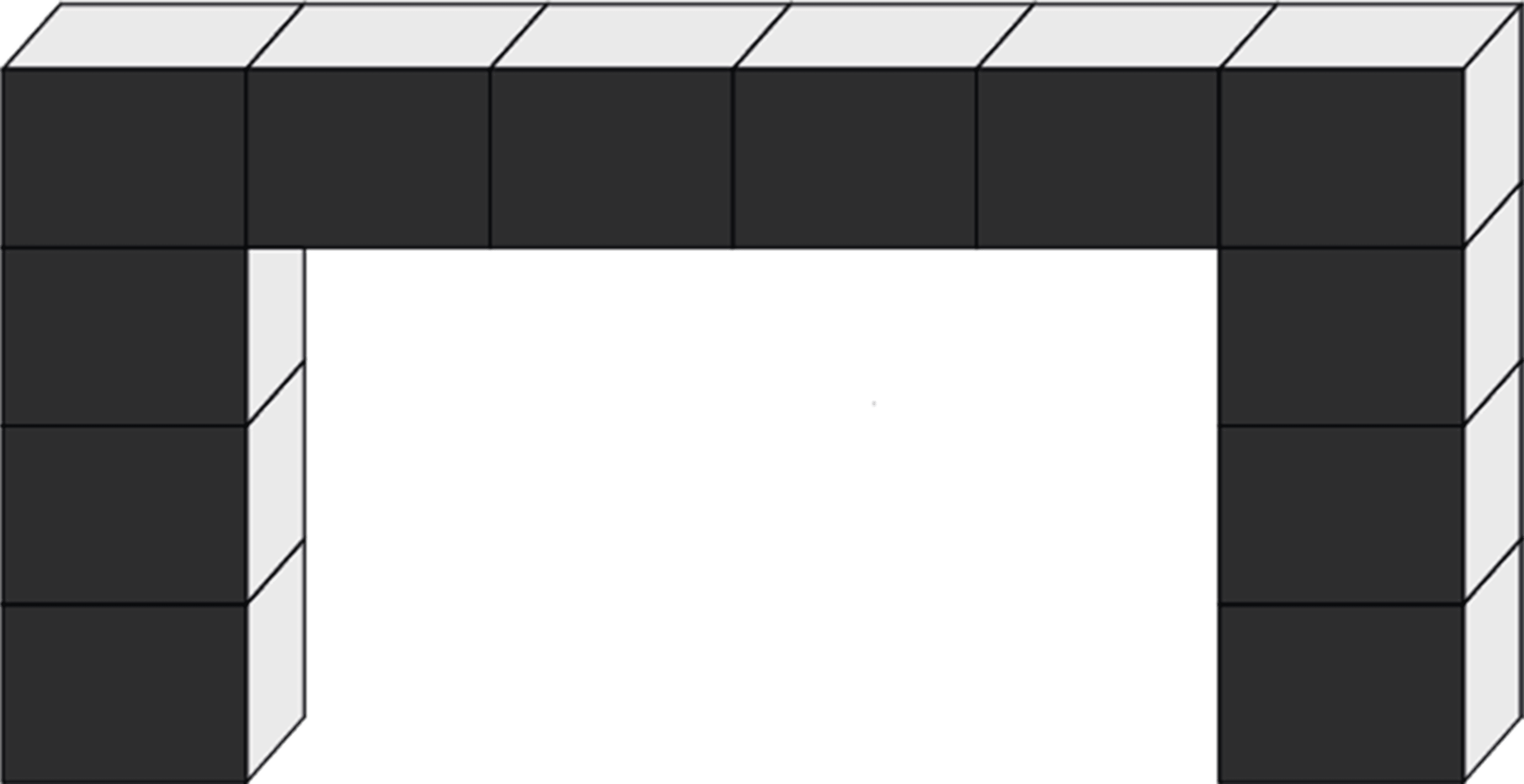
3.
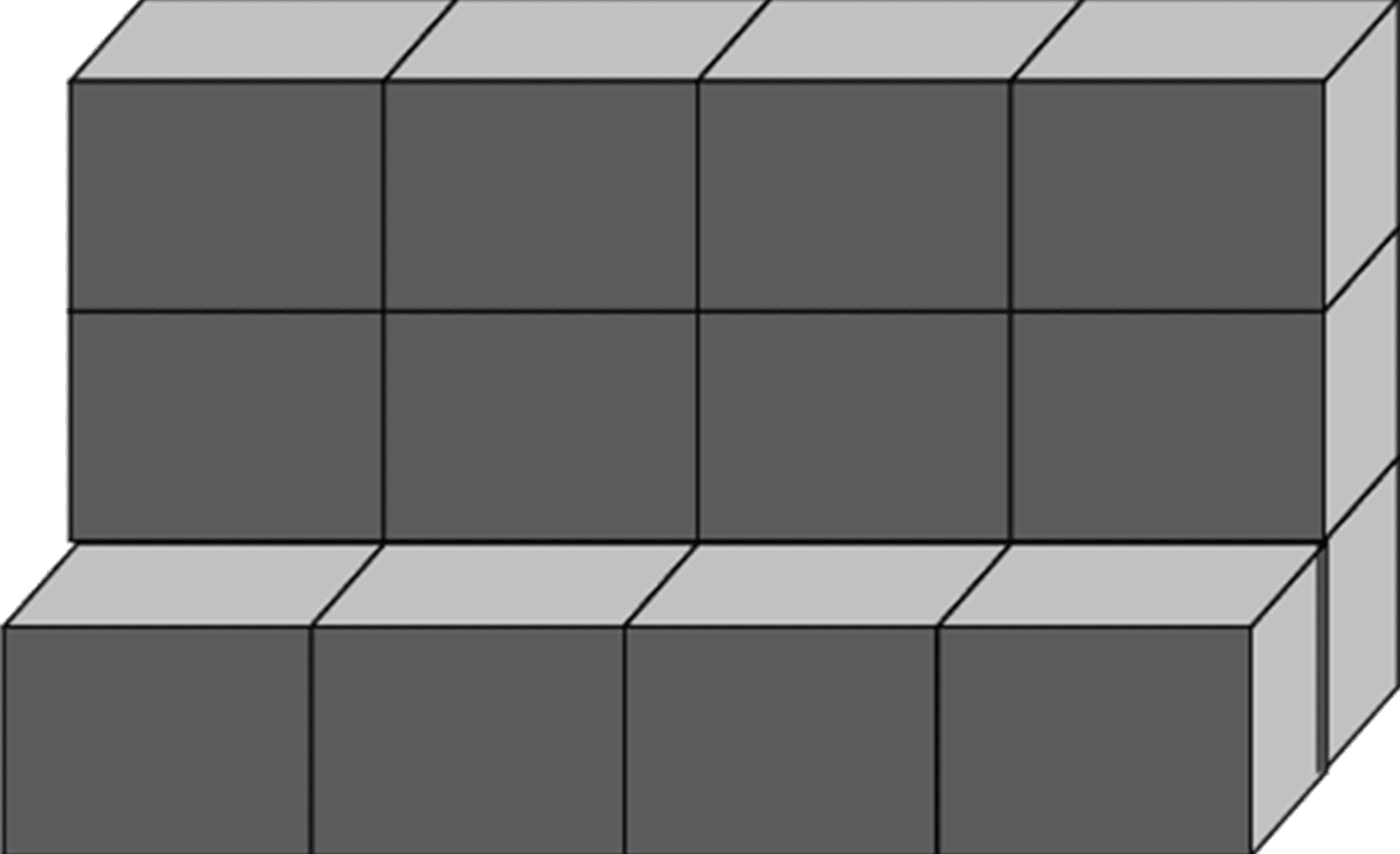
4.

5.
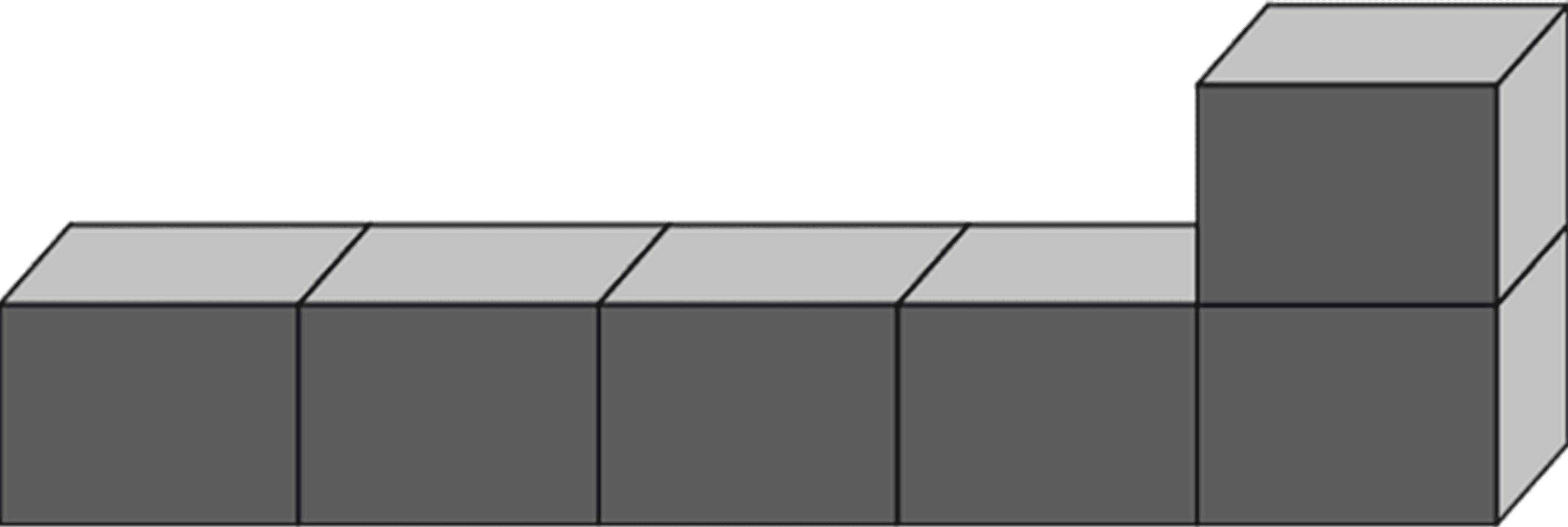
6. Sonia's garden features a 4 m by 2 m rectangular pool. After cleaning it out, she intends to fill it back with water to a depth of 25 cm. How much water does she require in litres?
7. Calculate the volumes of the objects below.
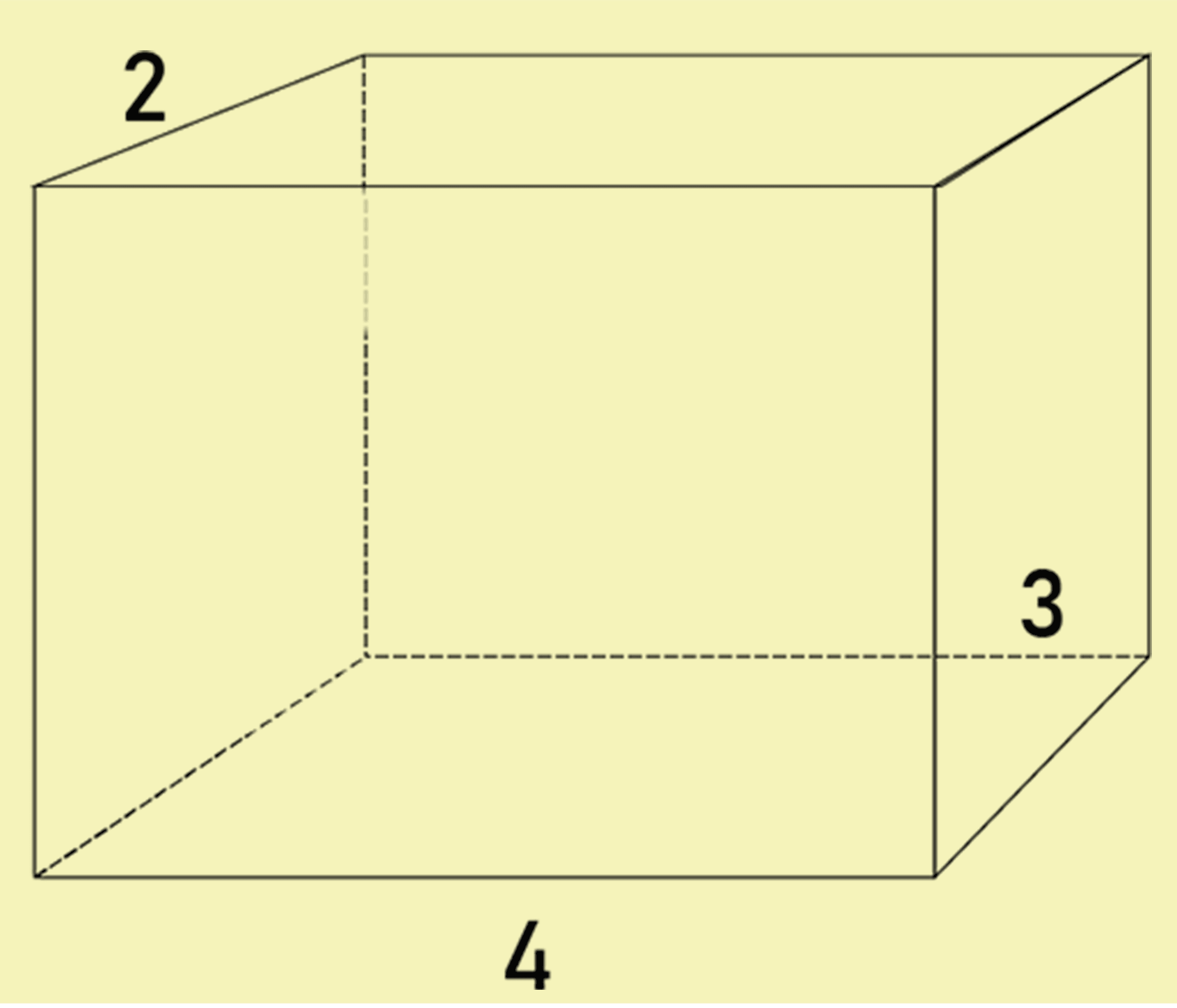
8. How many litres of water will it take to fill the kiddie pool to a 30cm depth?

9. 60 cm, 25 cm, and 15 cm are the dimensions of a storage container. What is its cubic centimetre volume?
10. Given below is the shape of a an eraser whose length is 8 cm, width is 6 cm, and thickness is 2 cm; based on this, choose the correct volume option.
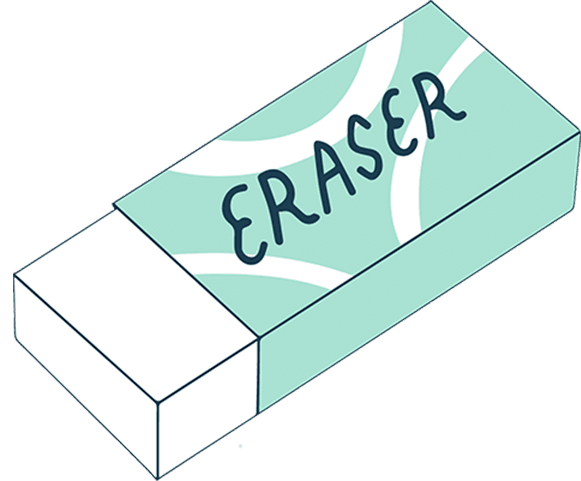
45 Cubic Cm.
96 Cubic Cm.
48 Cubic Cm.
18 Cubic Cm.
11. If the length of a matchbox is 4 cm, breadth is 3 cm, and thickness is 1 cm, choose the correct option of volume based on this.
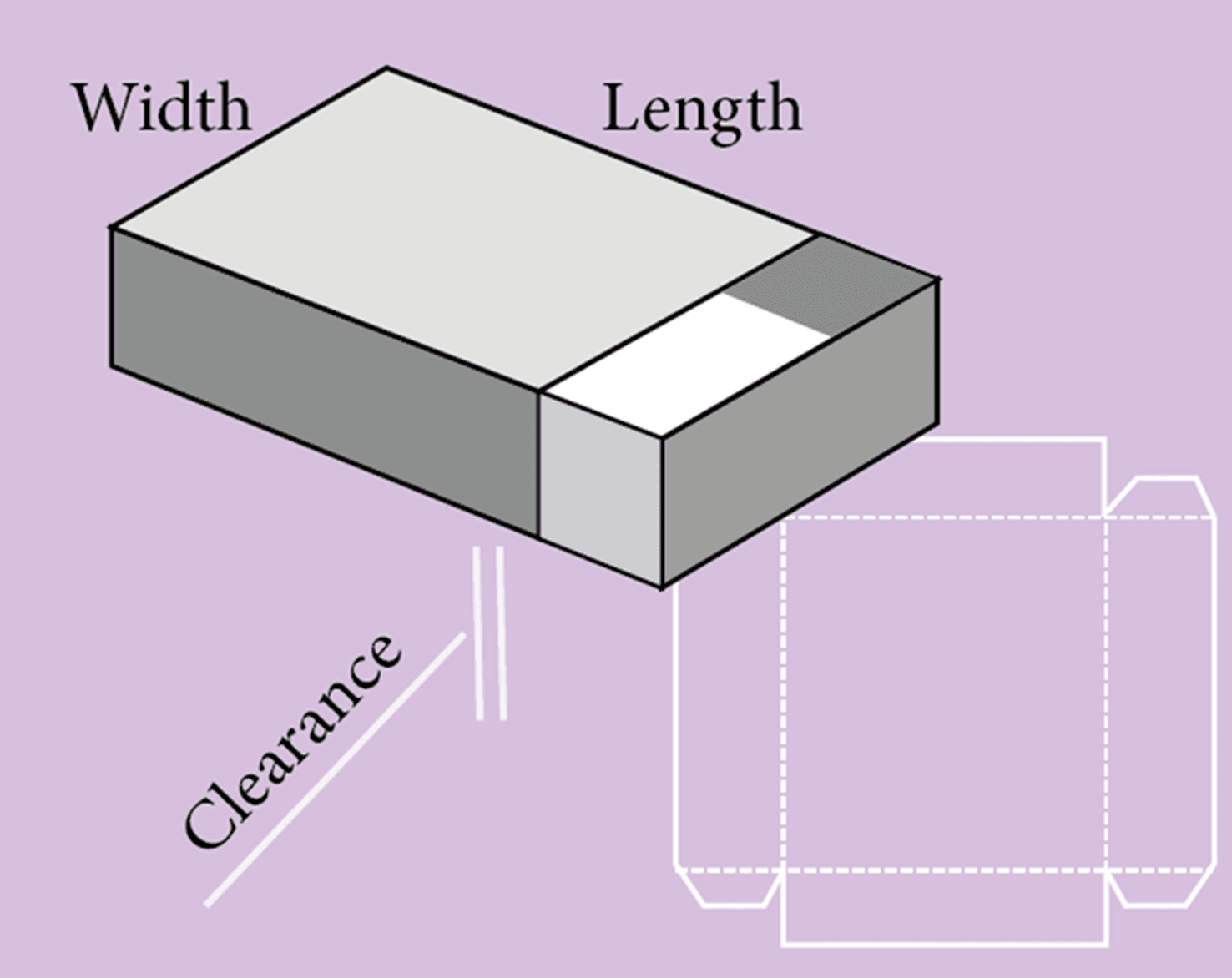
12 cubic cm
24 cubic cm
40 cubic cm
32 cubic cm
12. If the length of an eraser is 2 cm, the width is 1 cm, and the thickness is 3 cm, based on this, select the correct option of volume.
2 cubic cm
4 cubic cm
6 cubic cm
3 cubic cm
13. Here Prateek has decorated some matchboxes. According to the option, how many matchboxes have been used to decorate here?
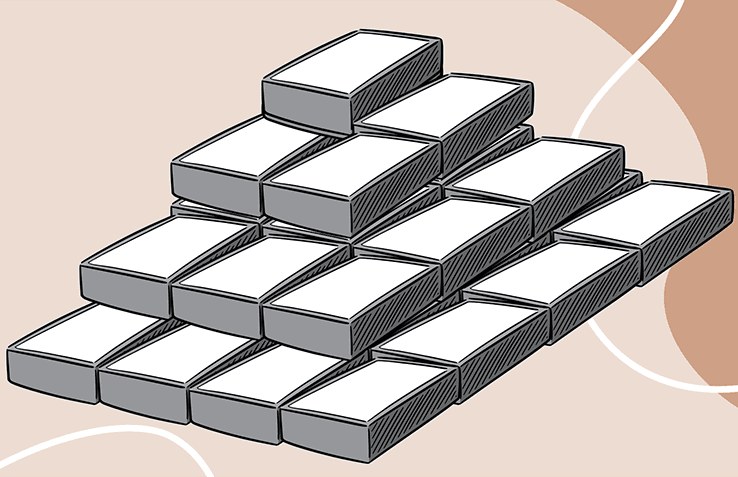
30
24
40
32
14. Elephant babies are born weighing about 160 kg. When you were born, how much did you weigh? Find out how many times an elephant baby weighs more than you did at birth.
40 times
34 times
24 times
32 times
15. Match the column. Find volume.
Length = 5cm, Breadth = 3cm, Width = 1 cm | Volume = 24 cubic cm |
Length = 7cm, Breadth = 5cm, Width = 2 cm | Volume = 96 cubic cm |
Length = 4cm, Breadth = 2cm, Width = 3 Cm | Volume = 15 cubic cm |
Length = 6cm, Breadth = 4cm, Width = 4cm | Volume = 70 cubic cm |
16. Match the column. Find volume.
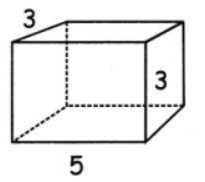
| 1 Cubic Cm. |
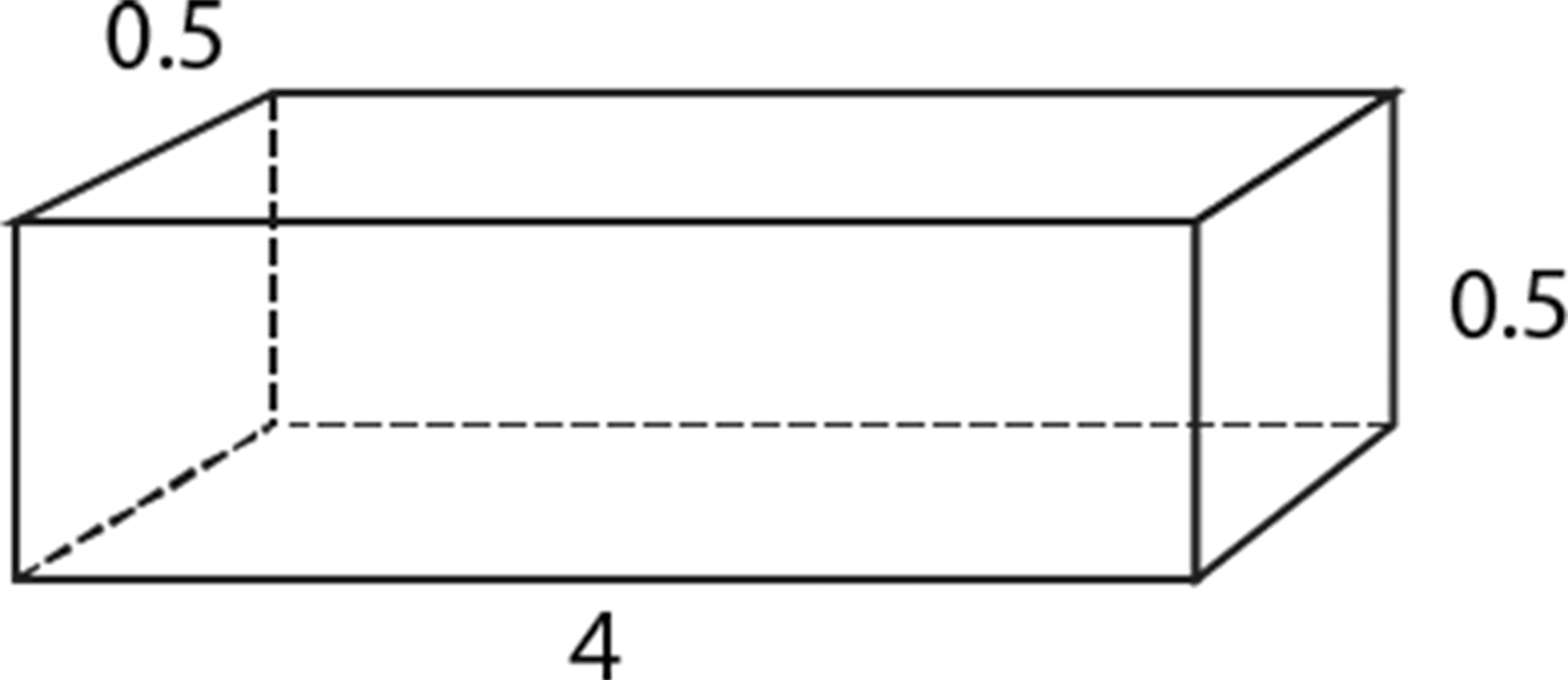
| 45 Cubic cm |
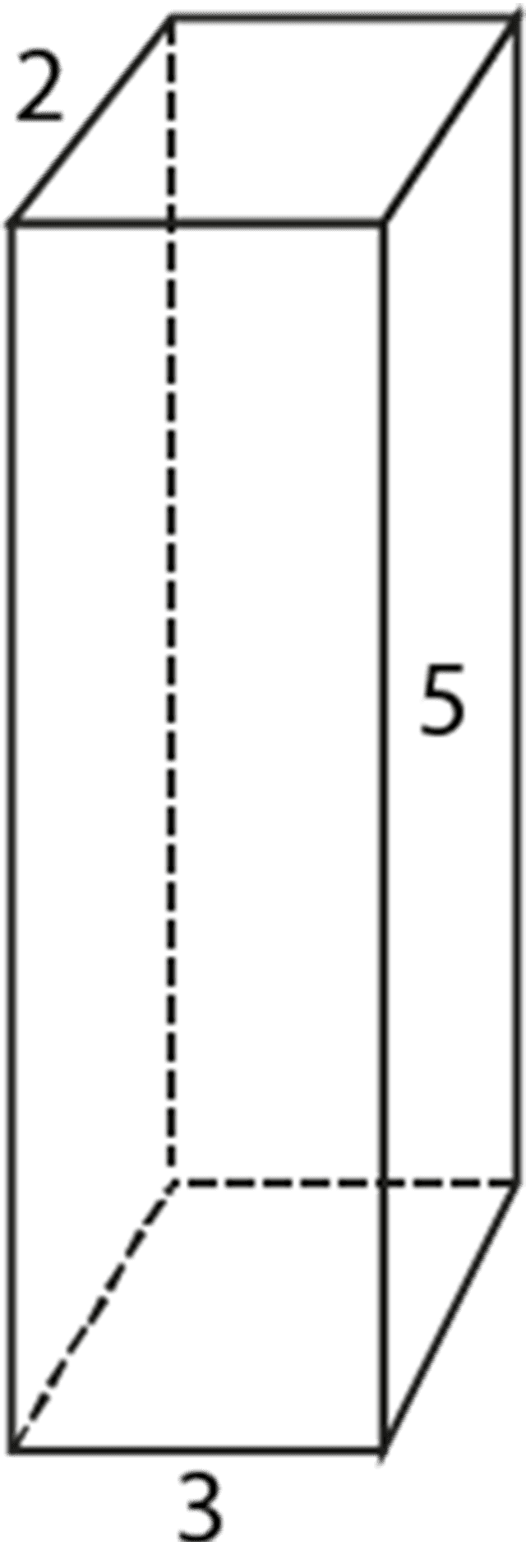
| 30 Cubic cm. |
17. If the length, breadth and thickness of two given bricks are such that one has 3, 5, 1 and 5, 6, 3, then which of them will have more volume?
18. If the length and breadth of two given steel are in such a way that one of the steel is 4, 6 and 7,5, then which of them will have more place?
19. If the length, breadth and thickness of two given tanks are such that one tank is 6, 8, 12 and the other is 8, 6, 9, then calculate its volume.
20. According to the given picture, tell its length, breadth and height.
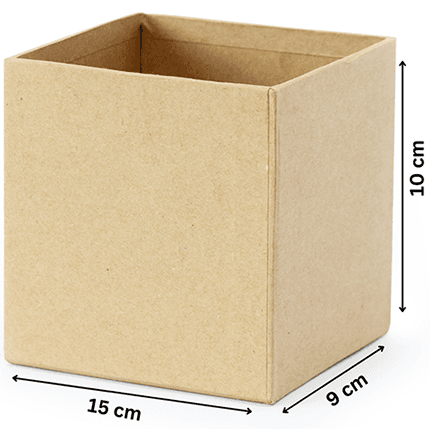
Answers to the Worksheet:
1. Volume= 17 unit cubes
In the figure there are total 17 cubes
And 1cube = 1 cubic cm
Volume = 17 × 1 cubic cm = 17 cubic cm.
2. Volume= 12 unit cubes
In the figure there are total 12 cubes
And 1cube = 1 cubic cm
Volume = 12 × 1 cubic cm = 12 cubic cm.
3. Volume= 16 unit cubes
In the figure there are total 16 cubes
And 1cube = 1 cubic cm
Volume = 16 × 1 cubic cm
= 16 cubic cm.
4. Volume= 13 unit cubes
In the figure there are total 13 cubes
And 1cube = 1 cubic cm
Volume = 13 × 1 cubic cm
= 13 cubic cm.
5. Volume= 6 unit cubes
In the figure there are total 6 cubes
And 1cube = 1 cubic cm
Volume = 6 × 1 cubic cm
= 6 cubic cm.
6. The best thing to do is first to get all the quantities into decimeters (dm) because 1 cubic $\mathrm{dm}$ is the same as 1 litre.
So $4 \mathrm{~m}=40 \mathrm{dm}, 2 \mathrm{~m}=20 \mathrm{dm}$ and $25 \mathrm{~cm}=2.5 \mathrm{dm}$
The volume of the water is then
$40 \mathrm{dm} \times 20 \mathrm{dm} \times 2.5 \mathrm{dm} = 2000 \mathrm{dm}^3$
Therefore, Sonia will require 2000 litres of water to fill the rectangular pool.
7. We know that, Volume $=$ Length $\times$ Breadth $\times$ Height
Volume $=2 \times 3 \times 4$
Volume $=24$ unit cubes.
8. Since, we know that 1 m = 100 cm.
Therefore, length 4m = 4 × 100cm = 400cm
Height = 1.5m = 1.5 × 100cm = 150cm
Breadth = 30 cm
We know that, Volume $=$ Length $\times$ Breadth $\times$ Height
Now, on substituting the values, we get
Volume $=400 \times 30 \times 150$
Volume $=18,00,000$ Lit. cubes
9. We know that, Volume $=$ Length $\times$ Breadth $\times$ Height
Volume $=60 \times 25 \times 15$
Volume $=22500$ cubic centimeter
10. Correct option (b)
We know that, Volume $=$ Length $\times$ Breadth $\times$ Height
Volume $=8 \times 6 \times 2$
Volume $=96$ cubic centimeter
11. Correct option (a)
We know that, Volume $=$ Length $\times$ Breadth $\times$ Height
Volume $=4 \times 3 \times 1$
Volume $=12$ cubic centimeter
12. Correct option (c)
We know that, Volume $=$ Length $\times$ Breadth $\times$ Height
Volume $=2 \times 1 \times 3$
Volume $=6$ cubic centimeter
13. (a)
Let’s start the counting of the box from the bottom. i.e. 1st level.
1st level: There are 16 box.
2nd level: There are 9 box.
3rd level: There are 4 box.
4th level: There is 1 box.
Therefore, total box = 16 + 9 + 4 + 1
= 30
Total number match box = 30.
14. Weight of a baby elephant = 160 kg
My weight at birth = 4 kg
Number of times a baby elephant was heavier than me at birth = $\dfrac{160}{4} = 40$.
So, the baby elephant was 40 times heavier than me at birth.
15.
1. | Length = 5cm, Breadth = 3cm, Width = 1 cm | Volume = 15 cubic cm |
2. | Length = 7cm, Breadth = 5cm, Width = 2 cm | Volume = 70 cubic cm |
3. | Length = 4cm, Breadth = 2cm, Width = 3 Cm | Volume = 24 cubic cm |
4. | Length = 6cm, Breadth = 4cm, Width = 4cm | Volume = 96 cubic cm |
1. Length $=5 \mathrm{~cm}$, breadth $=3 \mathrm{~cm}$, Width $=1 \mathrm{~cm}$
We know that, Volume $=$ Length $\times$ Breadth $\times$ Height
Volume $=5 \times 3 \times 1$
Volume $=15$ cubic centimeter
2. Length $=7 \mathrm{~cm}$, breadth $=5 \mathrm{~cm}$, Width $=2 \mathrm{~cm}$
We know that, Volume $=$ Length $\times$ Breadth $\times$ Height
Volume $=7 \times 5 \times 2$
Volume $=70$ cubic centimeter
3. Length $=4 \mathrm{~cm}$, breadth $=2 \mathrm{~cm}$, Width $=3 \mathrm{Cm}$
We know that, Volume $=$ Length $\times$ Breadth $\times$ Height
Volume $=4 \times 2 \times 3$
Volume $=24$ cubic centimeter
4. Length $=6 \mathrm{~cm}$, breadth $=4 \mathrm{~cm}$, Width $=4 \mathrm{~cm}$
We know that, Volume $=$ Length $\times$ Breadth $\times$ Height
Volume $=6 \times 4 \times 4$
Volume= 96 cubic centimeter
16.
1. | 
| 45 cubic cm. |
2. | 
| 1 cubic cm |
3. | 
| 30 cubic cm. |
1. Length $=5 \mathrm{~cm}$, breadth $=3 \mathrm{~cm}$, Width $=3 \mathrm{~cm}$
We know that, Volume $=$ Length $\times$ Breadth $\times$ Height
Volume $=5 \times 3 \times 3$
Volume $=45$ cubic centimeter
2. Length $=4 \mathrm{~cm}$, breadth $=0.5 \mathrm{~cm}$, Width $=0.5 \mathrm{~cm}$
We know that, Volume $=$ Length $\times$ Breadth $\times$ Height
Volume $=4 \times 0.5 \times 0.5$
Volume= 1 cubic centimeter
3. Length $=3 \mathrm{~cm}$, breadth $=5 \mathrm{~cm}$, Width $=2 \mathrm{~cm}$
We know that, Volume $=$ Length $\times$ Breadth $\times$ Height
Volume $=3 \times 5 \times 2$
Volume $=30$ cubic centimeter
17. Volume of first brick $=$ Length $\times$ Breadth $\times$ Height
Volume $=3 \times 5 \times 1$
Volume $=15$ cubic centimeter
Volume of second brick $=$ Length $\times$ Breadth $\times$ Height
Volume $=5 \times 6 \times 3$
Volume $=90$ cubic centimeter
Now, \[ 90 > 15\]
So, second brick has more volume than first brick.
18. First Steel Area $=$ Length $\times$ Breadth
Area $=4 \times 6$
Area $=24$ square $\mathrm{cm}$.
Second Steel Area $=$ Length $\times$ Breadth
Area $=7 \times 5$
Area = 35 square cm.
The second steel will take up more space than the first steel.
19. For the given question, we have
Length $=6 \mathrm{~cm}$, breadth $=8 \mathrm{~cm}$, Width $=12 \mathrm{~cm}$
We know that, Volume $=$ Length $\times$ Breadth $\times$ Height
Volume $=6 \times 8 \times 12$
Volume $=576$ cubic centimeter
For Second Tank,
Length $=8 \mathrm{~cm}$, breadth $=6 \mathrm{~cm}$, Width $=9 \mathrm{~cm}$
We know that, Volume $=$ Length $\times$ Breadth $\times$ Height
Volume $=8 \times 6 \times 9$
Volume $=432$ cubic centimeter
20. According to the given figure, its length, breadth and height will be something like this:

Length = 15 cm.
Height = 10 cm.
Breadth = 9 cm.
Importance of Going through Maths How Big How Heavy Question Answer
The understanding of heavy and big helps children gain ideas about different types of objects. The idea of measurements is most fundamental to the concept of Science and is used even by scientists to perform their experiments.
Measuring length, volume, and weight are used across all fields such as engineering, farming, manufacturing, construction, commerce, and many other occupations and activities.
As kids develop cognitively, they can intuitively figure out which object is bigger than another. But the idea of weight and force is tricky, hence a formal understanding of these concepts can help them better estimate that volume differs from weight.
Children can meaningfully compare an object's attributes like length, weight, and volume once they understand these parameters.
In Class 5 Maths Worksheets PDF, children also learn about units of measurement, which is an essential concept to answer questions like "how much more does this glass hold?" Children also learn many principles of measurement by using an object to measure, such as:
You express measures by counting the total quantity of units used.
You need to choose the unit of measure appropriately.
You must not change the unit of measurement during a measurement activity.
When you learn the concept of capacity and volume, you are better able to understand how similar or different they are.
In the chapter, kids will also learn many tips and tricks on how to convert one unit to another, for example, grams to kilograms and vice versa.
Examples of Class 5 Maths Exercise - How Big How Heavy Question Answer
In this chapter, various exercises teach the concept of volume, weight, and length in a variety of ways. Some of them are illustrated below:
1. Take a measuring bottle of any volume (10 ml, 200 ml, etc.) and find out the following:
The volume of sixteen one rupee coins.
The volume of eight marbles.
The volume of thirty, two one rupee coin
The volume of sixteen marbles.
2. Use the measuring bottle and a few five rupee coins to answer the following questions:
How many coins are used if 20 ml of water moves up?
How many coins are used if 80 ml of water moves up?
3. Match the following objects to their most likely weight:
A sack of rice (i) 5000 kg
A History book (ii) 5 kg
An elephant (iii) 500 grams
Tables stip (iv) 50 grams
4. Measurements of a cube are given (length, breadth, and height,) and students need to find the following:
The volume of the cube.
How many cubes will fit into a book of given height, width, and length?
What will be the length of a line when 100 cubes are arranged in a line?
5. What is the volume of the following objects?
A matchbox
An eraser
A geometry box
A tiffin box
Facts About How Big How Heavy
Big refers to the size of a body, while heavy refers to its weight.
The length, width, and height of a cube are the same.
The volume of a cube is equal to edge3 cubic units.
A cube has six faces, and all of them are squares of equal size.
A cuboid has rectangular faces.
The volume of a cuboid is equal to the length * height * breadth of cubic units.
The weight of an object depends on the force acting on it, which could be either gravity or an outside force.
In a state of freefall, the weight of any object is zero, such as in a spaceship.
Important Topics of Maths Worksheet Class 5
Understand the difference between weight and volume.
Learn different units of measurement of length, weight, and volume.
Solve practice questions on measurement.
Download Free Class 5 Maths Worksheets PDF How Big How Heavy
If you are looking for a clear explanation of the Class 5 Maths Chapter 14 worksheet with answers, then the experts of Vedantu have you covered. Their content on “How Big How Heavy” caters to the latest CBSE curriculum, and the experts keep them updated as per changes in the curriculum.
In the PDF, you will find many tips and tricks for the easy conversion of one unit of measurement to another.
You can download this PDF on your device such that it is accessible even without any network connection.
You could also take a printout of this PDF to revise all the formulas before the exam.
The concept of measurements is a little tricky for young minds, so Vedantu has prepared its content to make it easy for the kids of Class 5 to understand them easily and accurately apply the rules to any kind of question.
FAQs on Practice Maths Chapter 14: How Big How Heavy with Free PDF (2025-26)
1. What is the common unit of measurement for weight?
Weights are usually measured in kilograms, but for smaller and lighter objects, one uses grams as a unit of measurement.
2. What is the difference between volume and capacity?
The amount of space inside a solid 3-dimensional figure (a figure having length, height, and breadth) is the volume of that figure and is measured in cubic units. The capacity of a figure is a measure of the amount of liquid the figure can hold inside. Capacity is measured in a lot of ways, such as litres, millilitres, pints, cups, gallons, and quarts.
3. What is the formula for finding the volume of a rectangular object?
You can find the volume of a rectangular object by multiplying its length, breadth, and height; Volume = l * b * h.

















